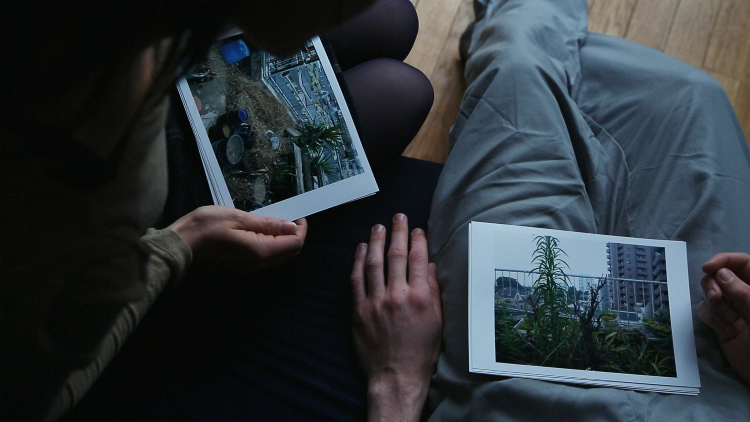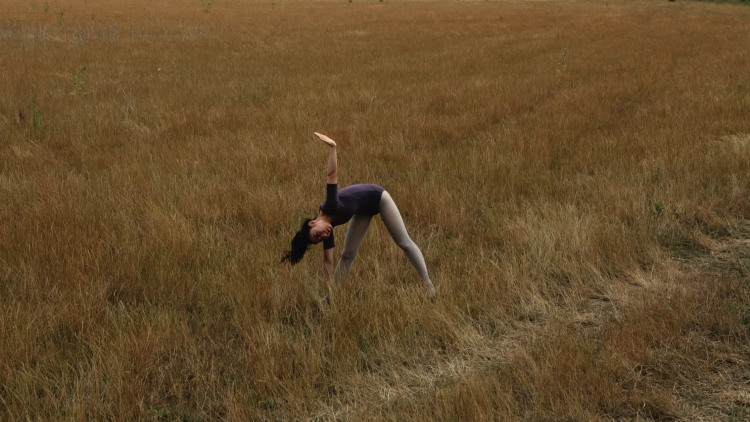Unrepresentable Trauma | Interview with filmmakers Joji Koyama and Tujiko Noriko
In 2017, filmmakers Joji Koyama and Tujiko Noriko joined forces in directing their stirring debut Kuro. Kuro follows the uncanny story of Mr. Ono (Mr. Black in Japanese). The story is recounted by a young Japanese woman named Romi, as she attends to her paraplegic husband in their suburban Paris home. An unknown fate follows the couple like a shadow, at the centre of which stands Mr. Ono. Alongside co-directing and starring in the film, Noriko composed an OST that injects claustrophobia into domestic scenes and heightens suspicion in the viewer as the story unfolds. Noriko and Koyama recently released the official Kuro soundtrack with multidisciplinary label PAN, as part of the Entopia series. Headstuff caught up with the pair just after the launch in Berlin.
Noriko, you recently performed at Berlin Zeiss-Grossplanetarium and PAN launched the Entopia series with a screening of Kuro. How was it for you both?
Tujiko Noriko:
We had the screening the night before the Entopia release date, so it felt very celebratory to be with Bill Kouligas and the rest of the PAN team. Above all, it was wonderful to have Jackie, who stars in the film, with us at a screening; something that hadn’t happened since we completed the film.
Joji Koyama:
We edited and put together the music in Berlin, so it felt fitting to be in Berlin to present it together.
You each work in different creative fields – music, graphic art, animation, etc. How did the filmmaking partnership come about?
Tujiko Noriko:
We had both made short films in the past, so you could say this was where our work overlapped. More than anything we were very close friends, and we began working together in a way that didn’t actually feel like we were working, despite all the hard work that was involved. I remember writing the script together and just laughing a lot. It was a joyous time.
Joji Koyama:
As well as being good friends, I always felt that we shared a certain sensibility. I remember that for a while we were both writing separate film scripts and we started sharing what we were writing and giving feedback to one another. So beginning to write together was not a huge leap from that.
Noriko, you starred in the film while also co-directing and writing the OST. How did you manage to balance these different roles? Did they feed into one another?
Tujiko Noriko:
It was natural for me to play different roles as I always looked at it from the overall view of directing the film. The only slight difficulty in terms of balance was the practical reality of having to be mostly in front of, rather than behind, the camera during shooting.
The film’s split narrative proved a powerful form for thinking about memory and trauma as an experience that resists meaningful integration. What sparked this idea for you?
Tujiko Noriko:
I think we maybe already had some sense of having layered stories in the film from the start; and I seem to remember Joji talking about Jaques Rivette’s Celine and Julie Go Boating, the way the characters are transported between two worlds by eating candy. I guess I always feel somehow compelled to take a slightly removed point of view. But the so called split narrative you refer to is something that came about gradually. At some point we realised that if we made the film by visualising the story in a straight way, it would be ridiculous.
Joji Koyama:
I can remember a specific moment, to give you an example, where we tried to visualise the Kuro character by making drawings and gathering other images. After a while, we realised that as soon as we pinned down Kuro as an image, its potency, or its potential sense of threat, suddenly dissipated. I think this is where we started to become obsessed with nurturing the ambiguity of Kuro – not for the sake of being ambiguous, but to try and foster a sense of something that cannot be represented, that is unknowable.
Kuro raises a lot of difficult ethical questions around intimacy, violence and care. How has the response been in regard to these issues? Have you had anyone reaching out to you with personal stories?
Joji Koyama:
It was never our intention to try to accurately portray either a certain condition or a specific kind of care-giving. For me, it was always more about trying to set up a relationship and, more broadly speaking, a tension between the tyranny of Romi’s story and what was likely an unrepresentable trauma. So, I was quite surprised when a lady who had worked as a carer came up to me after a screening in Tokyo and expressed how close it had felt to her, and how it had brought it all back to her in a very visceral way.

It’s not always clear in the film which scenes are set in Paris and which are set in Tokyo. It’s like you’ve opened up an insular, in-between space where chaos can interject. Was this an intended effect?
Joji Koyama:
It was intentional, and maybe the sub-plot or sub-theme of the film, or however you want to call it, is the experience of being a Japanese expat in Europe, and the psychological space you enter when your sense of place merges with different fragments of things, places and memories. The “in between” is not only linguistic but also geographic and cultural. It’s a bit like listening to a piece of music that you strongly associate with specific things – suddenly everything you associate it with floods into the space you are in.
Tujiko Noriko:
In the original script, the characters were living in the middle of the woods and the action was largely in this very insular setting. It just so happened that both Joji and I had both filmed personal and family-related footage of dilapidated interiors and we began combining them together with the scenes we shot in Paris during the edit. Thinking back, all of these images were in one way or another very close and personal to us (the scenes in Paris were shot in an apartment that I lived in with my daughter), and it feels somewhat of a paradox to make them appear as a kind of series of non-spaces.

Kuro comes from the term Kuroko [a stagehand in Japanese theatre that dresses in black and assists set changes]. Mr. Ono’s character cleverly mirrors this concept as an inconspicuous embodiment of fate manipulating things behind the scenes. Is traditional Japanese theatre an important source of inspiration for your work?
Joji Koyama:
I’ve always been interested in Japanese theatre, but I don’t think we started off thinking about it in relation to the film. It was more that the figure of the Kuroko, and also to an extent the Benshi, [a silent film narrator] became useful vessels to carry some of the ideas in the film.
The OST is very much a continuation of Noriko’s solo work, but with an added sense of tension and claustrophobia. Did the score-writing process bring new challenges to your musical practice, Noriko?
Tujiko Noriko:
I really wonder why I hadn’t made an instrumental album yet. I find it quite strange. Of course I love writing songs, but this has really made me want to make all kinds of music. In my early twenties I used to make a lot of field recordings, and working on Kuro somewhat reignited my desire to record things, so I hope to continue this.

PAN is a multi-disciplinary record label working with clients in contemporary art, fashion, media, etc. How does it feel to give life to the soundtrack beyond the world of Kuro, perhaps in a totally different field?
Tujiko Noriko:
I think it’s very interesting for the film to encounter different people, and for the music to travel through different contexts. It would be disappointing for our work to stay in one given place.
Joji Koyama:
We were both attracted to the idea that the soundtrack could be presented both in relation to the film as well as an artefact from the film that could be let out into different contexts. This is what made us feel very sympathetic to what Bill Kouligas wanted to do with the Entopia series.
Any new projects in the works at the moment?
Joji Koyama:
We are slowly working on a new sound project but it’s very early days still.
